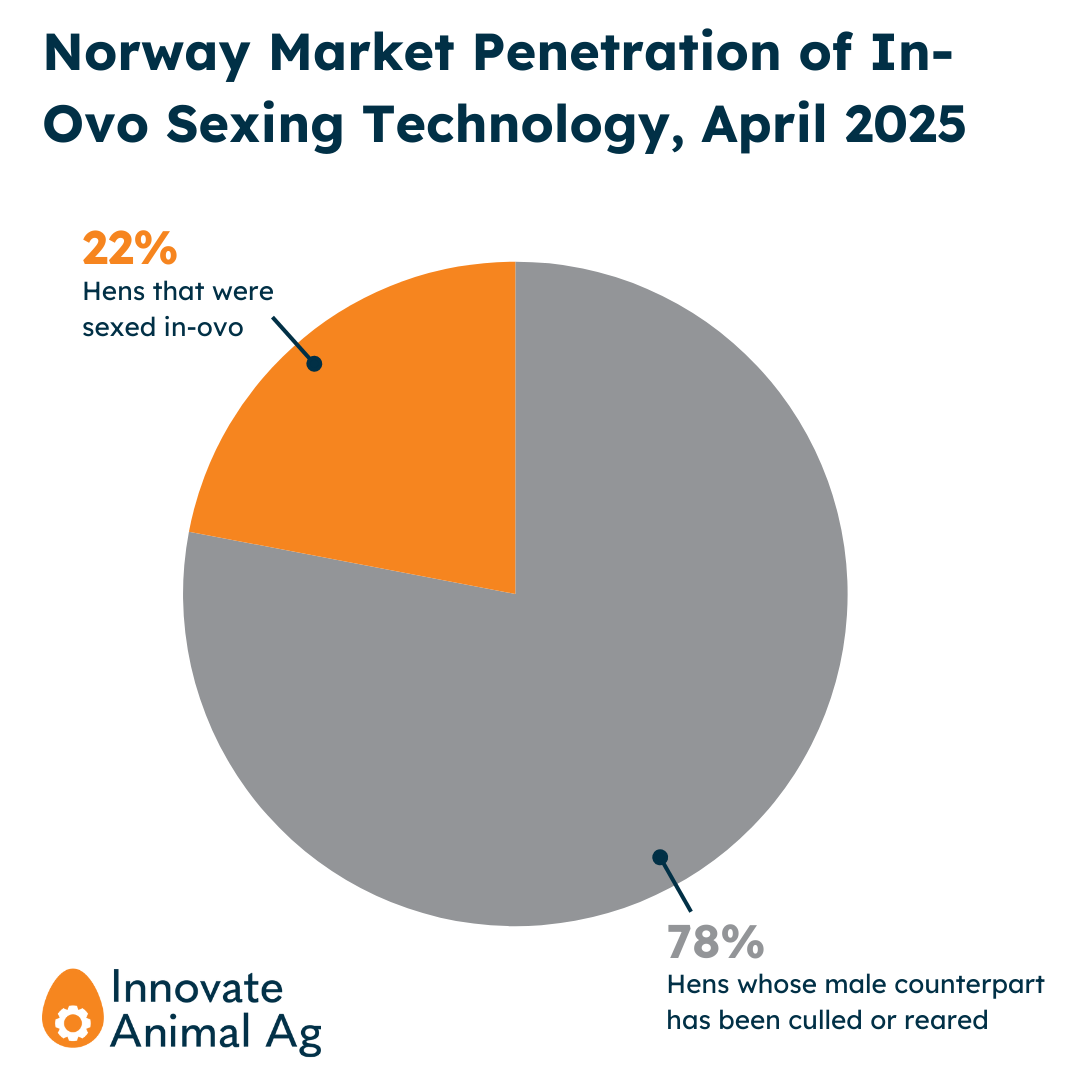One Norwegian Hatchery’s Bold Gamble on In-Ovo Sexing Pays Off
Tone Steinsland and Nash Mapfumba at the Steinsland Hatchery
In the world of agricultural innovation, sometimes the most remarkable transformations come from unexpected places. While much of Europe’s adoption of in-ovo sexing technology has been driven by markets with regulatory pressure, Norway is charting a different path—a path purely based on market demand and forward-thinking business strategy.
Norway quietly made history in 2023 when Steinsland & Co, the country's largest hatchery, became the first in the world to implement in-ovo sexing technology for a market without any regulation mandating its adoption.
"The practice of having to cull all newly hatched male chicks immediately after hatching is something we at Steinsland have dealt with for more than 70 years and through three generations. It has always been an ethical dilemma for us," says Tone Steinsland, owner of Steinsland & Co.
Adopting in-ovo sexing carried significant business risk, but as Steinsland notes, "making bold decisions also creates opportunities." The gamble is paying off. In the coming month, Steinsland will reach a remarkable milestone: hatching their one millionth in-ovo sexed female chick with Respeggt’s Circuit. And, as Steinsland reports, the technology's performance has been exceptional, with "less than 1% errors on average, and at one hatch we were down to 0.2% males."
What began with one forward-thinking hatchery has quickly expanded across Norway. Sirevåg Rugeri, Norway's second major hatchery, has also embraced the technology, with Orbem's in-ovo sexing system now up and running. The hatchery produced its first in-ovo sexed chicks in April 2025, further cementing the technology's foothold in the country.
In just 18 months, Norway has achieved a 22% market penetration of in-ovo sexing for its country's 4.3 million head commercial layer flock.
The nature of Norway's transition makes its progress all the more impressive. As Steinsland explains: "No egg producer is forced to order in-ovo sexed chicks in Norway, thus it is all still at a voluntary level."
Yet the momentum continues to build. Norwegian CPG conglomerate Nortura, which accounts for around three-quarters of Norwegian egg production, has announced that all eggs sold under their Prior brand will be from in-ovo sexed hens by the end of 2025, and that all of its eggs will be moving in this direction over the next couple of years.
"For us, one aim behind the investment was also to help the whole egg industry in Norway increase the competitiveness of Norwegian eggs," Steinsland says. "Sooner or later, we believe our move to introduce in-ovo sexing to Norway will lead to an industry standard and that we will be one of the first countries where 100% of the chicks are in-ovo sorted."
Though Norway is the leader, they are part of a growing movement of countries adopting in-ovo sexing without regulatory pressure.
Switzerland's poultry industry stakeholders have decided to implement the technology in the country's two main hatcheries, Animalco and Prodavi, which will begin production for the entire Swiss layer flock this year.
In the Netherlands, the government recently announced an industry-led plan to end male chick culling by 2026, with most Dutch hatcheries already technologically equipped for this transition.
Finally, the United States is also seeing market-driven adoption, with specialty egg producers NestFresh and Kipster leading the way. Three in-ovo sexing machines have now been installed in American hatcheries, and Walmart has even included the technology as a focus area in their latest egg supplier guidelines.
The Norwegian example shows that adoption of in-ovo sexing can not only succeed without government mandates but can also position early adopters as industry leaders. As in-ovo sexing continues its rapid global expansion, Norway's pioneering approach provides a compelling model for markets worldwide.
For more information about in-ovo sexing technology and its global adoption, visit our latest In-Ovo Sexing Market Penetration and Forecast Report


